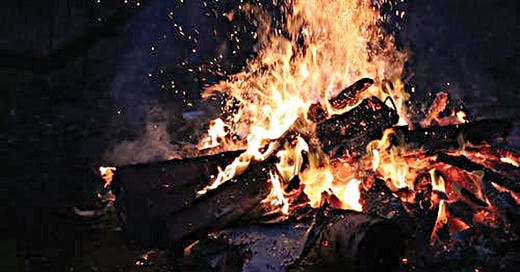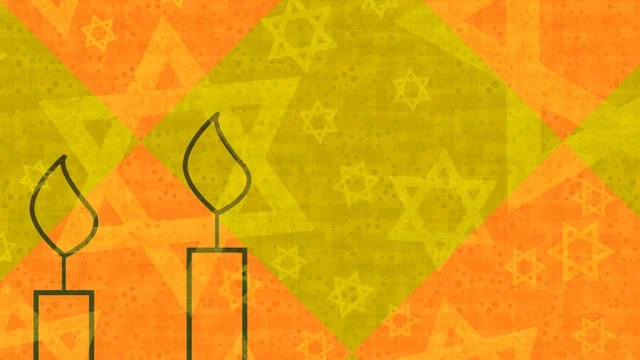Over Israel’s Yom Ha’atzma’ut / Independence Day, fires in the Judaean Hills caused severe damage. Prime Minister Netanyahu and National Security Minister Ben-Gvir politicized the incident, alleging without evidence that it was the work of Arab arsonists; Netanyahu’s son blamed it on the ruling coalition’s leftist opponents.
Other, more fair-minded parties – such as the country’s police and fire department – disagreed; President Herzog identified climate change as the principal cause. (Netanyahu had made the same claim before switching to his go-to tactic of targeting a convenient scapegoat.)1
Thank God, the conflagration did not claim any human lives, but it was devastating and disruptive: burning large areas of forest land, bottling up traffic, forcing home evacuations, and scuttling holiday celebrations. The smearing of political opponents and perceived enemies fanned flames of suspicion and divisiveness, which the country, already scorched by heated recriminations, can ill afford.
Ironically, public ceremonies for Yom Hazikaron / Memorial Day, which leads into Yom Ha’atzma’ut, involve lighting fires; those had to be canceled or limited to avoid aggravating risk of fire damage. As in U.S. Fourth of July celebrations, barbecues are a typical Israel Independence Day activity; these too were restricted for safety reasons. Environmental concerns doused religious ardor with common sense.
But such caution seems absent from Israel’s overheated social atmosphere. And as physical fires, accompanied by dangerously inciting rhetoric, swept across the arid landscape, war in Gaza continued to rage – with no ceasefire in sight there either.
This week – on May 15-16, evening to evening – we observe Lag ba’Omer, day 33 of the Omer period of semi-mourning, between Pesach and Shavuot, when our ancestors felt anxious over whether the wheat harvest beginning on Shavuot would be successful. During this break, weddings are held, haircuts take place (mourners otherwise customarily refrain from cutting their hair or shaving), and groups sit around bonfires and tell stories.
A second explanation for Lag ba’Omer’s cheerful mood links it to cessation of a plague, during the Bar Kochba rebellion (2nd century C.E.), that had killed students of Rabbi Akiva, a key supporter of the uprising. According to another story, Rabbi Shimon bar Yochai, Akiva’s disciple and a great sage and saint in his own right, died on this day so that we honor him by lighting fires symbolic of the Torah radiance he embodied.
In light of the fire hazard, this year a ban on bonfires is in effect in most areas of Israel2, which, along with many other parts of the world, is experiencing drought3 and witnessing its combustive impact on our habitat. Meanwhile, those infernos of partisan politics and unrelenting war are exploding furiously, out of control, consuming everything in their path. Can we please lower the temperature?
Striking a match carries risks. As Israel’s need to limit use of fire on Lag ba’Omer shows, the reality of climate change compels us to find new ways of keeping the spark of holiness – spiritual passion – aglow in our hearts while we try to come up with a better model of human relations.
We must be careful about how to go about lighting our fires. This moment calls upon us to exercise restraint, in the spirit of Shabbat candle-lighting. The quiet twin flames we see on Friday night calmly reassure us, sitting around the dinner table, that God is in our midst, shalom our yerushah/birthright.
When you plan to light a fire on Lag ba’Omer, know the risks involved, be aware of your surroundings, and keep an eye on your fire at all times. If you decide, for safety’s sake, not to light a physical fire, take comfort from a parallel that ties in with Jewish history:
After the Temple in Jerusalem was destroyed in 70 CE, our people no longer had a place where they could go to make offerings by holy fire, so Pharisaic (Rabbinic) Jews substituted, for those priestly rituals, torah, avodah, and gemilut chasadim / Torah study, synagogue worship and deeds of lovingkindness.
The fire of devotion to God, translated from physical sacrifices into symbolic expressions of religious commitment, continued to burn warmly in Jewish hearts over succeeding centuries. Our Rabbis encouraged, instead of political rancor, civil discourse; instead of war, peace.
If you think lighting a fire on Lag ba’Omer this year is not safe, follow the example of Shimon bar Yochai: Set your inner self – your very soul – ablaze with knowledge of the divine. Let its illumination be your guiding light.
(Lag ba’Omer bonfire / https://jewishjournal.com/wp-content/uploads/2017/05/cal-bonfire.jpg)
(https://cdn.pixabay.com/photo/2021/01/05/16/23/star-of-david-5891704_1280.jpg)
https://www.polytechnique-insights.com/en/columns/planet/droughts-exacerbated-by-climate-change/




